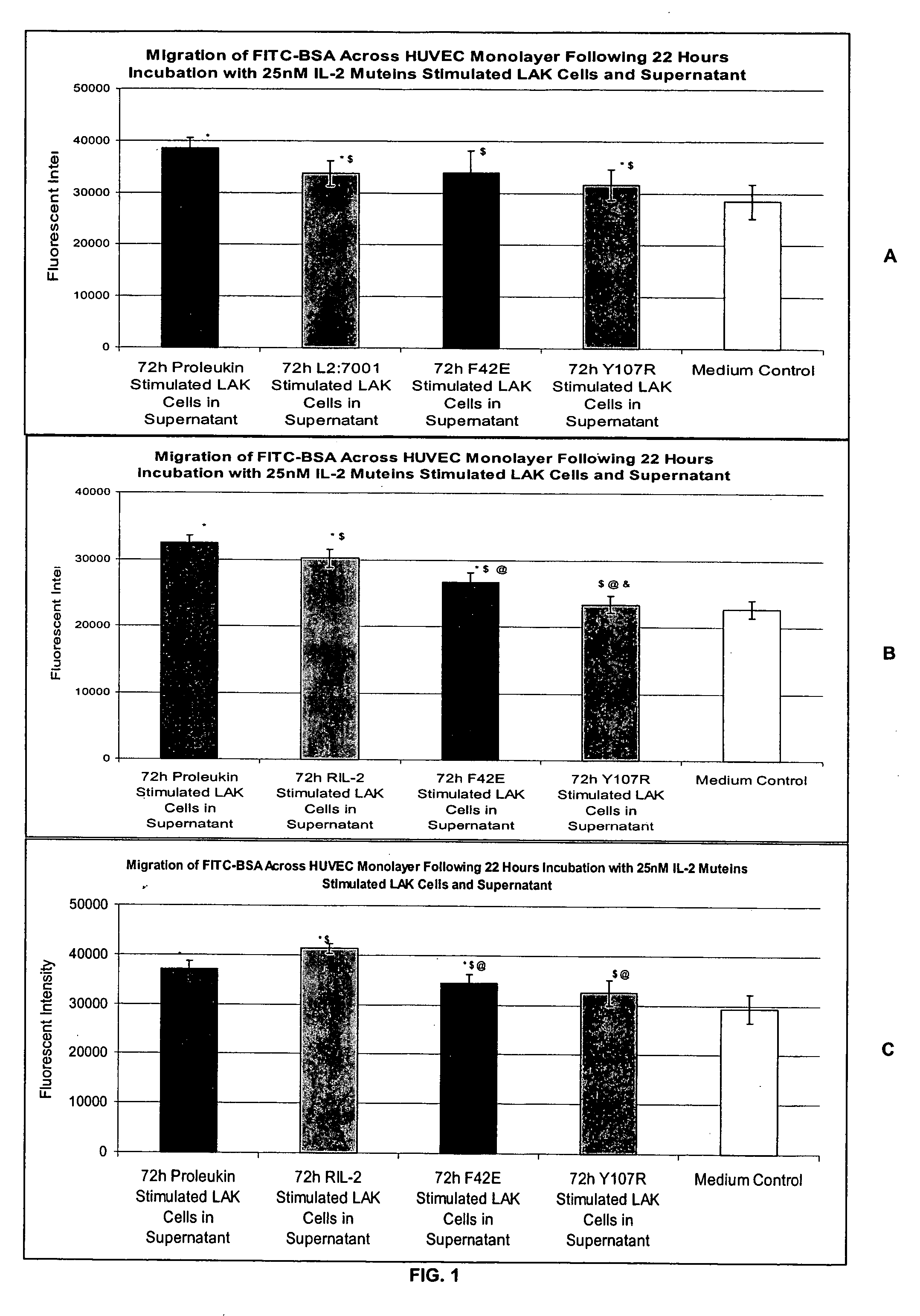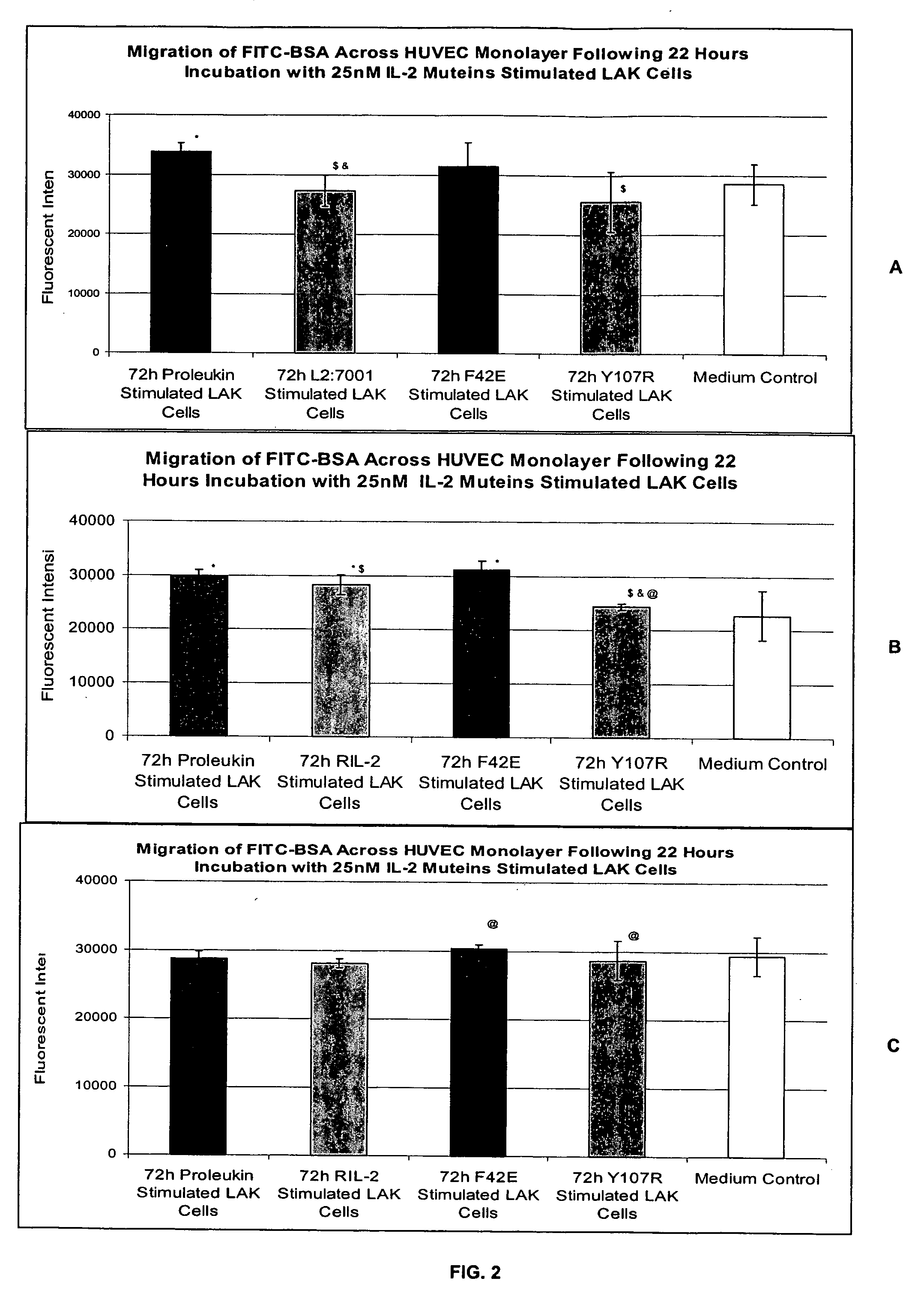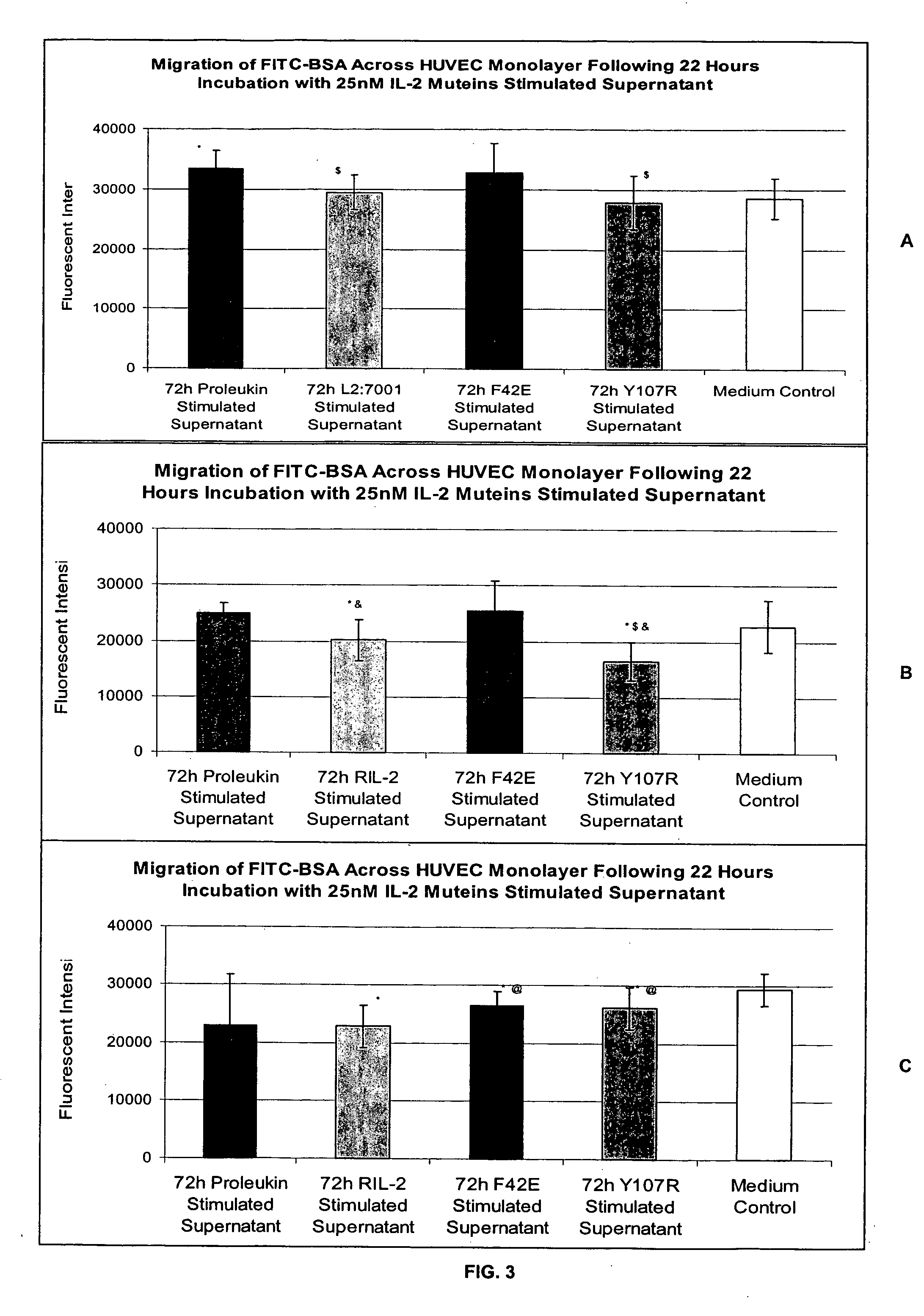In vitro test system for predicting patient tolerability of therapeutic agents
a technology patient tolerability, which is applied in the field of in vitro test system for predicting patient tolerability of therapeutic agents, can solve the problems of poor tolerability and toxicity, hampered therapeutic utility of many of these therapeutic agents, and not being used to predict tolerability. to achieve the effect of predicting tolerability
- Summary
- Abstract
- Description
- Claims
- Application Information
AI Technical Summary
Benefits of technology
Problems solved by technology
Method used
Image
Examples
example 1
In Vitro Assay for Screening IL-2 Muteins
[0115] In order to test the ability to predict patient tolerability of IL-2 muteins, the following assay was conducted. Two IL-2 muteins with improved tolerability were used in the assay as proof of principle. These muteins were F42E and Y107R substitution mutants. See, commonly owned, copending U.S. Provisional Application Ser. No. 60 / 550,868, filed Mar. 5, 2004. These muteins also maintain effector function in in vitro and in vivo models in terms of NK and T cell proliferation, as well as NK / LAK / ADCC activity. In addition, Proleukin®, Chiron Corporation, Emeryville, Calif. was used as a representative IL-2 molecule that can cause VLS. The IL-2 in this formulation is a recombinantly produced, unglycosylated human IL-2 mutein, called aldesleukin, which differs from the native human IL-2 amino acid sequence in having the initial alanine residue eliminated and the cysteine residue at position 125 replaced by a serine residue (referred to as de...
PUM
| Property | Measurement | Unit |
|---|---|---|
| thickness | aaaaa | aaaaa |
| concentration | aaaaa | aaaaa |
| concentration | aaaaa | aaaaa |
Abstract
Description
Claims
Application Information
 Login to View More
Login to View More - R&D
- Intellectual Property
- Life Sciences
- Materials
- Tech Scout
- Unparalleled Data Quality
- Higher Quality Content
- 60% Fewer Hallucinations
Browse by: Latest US Patents, China's latest patents, Technical Efficacy Thesaurus, Application Domain, Technology Topic, Popular Technical Reports.
© 2025 PatSnap. All rights reserved.Legal|Privacy policy|Modern Slavery Act Transparency Statement|Sitemap|About US| Contact US: help@patsnap.com



